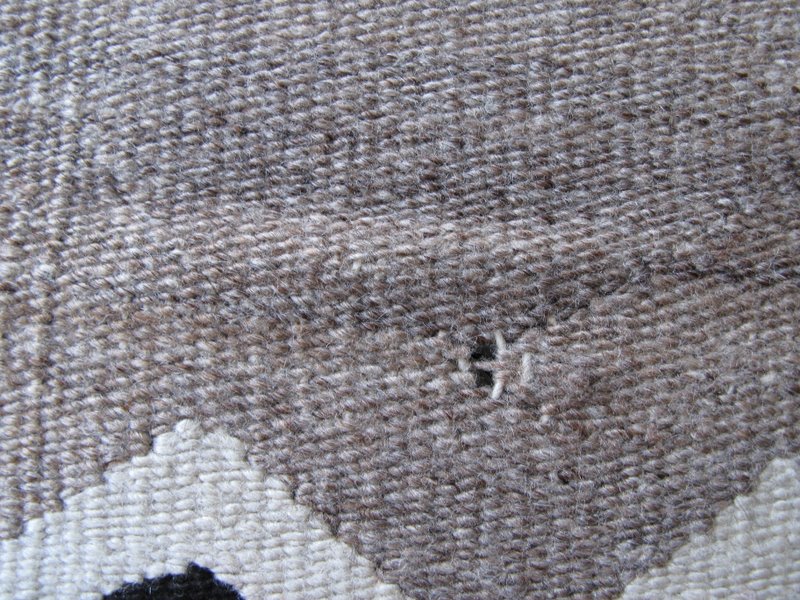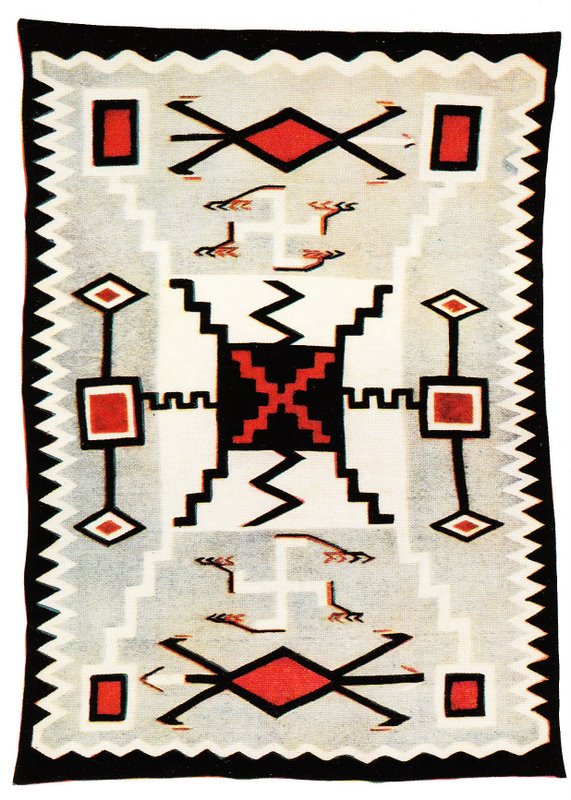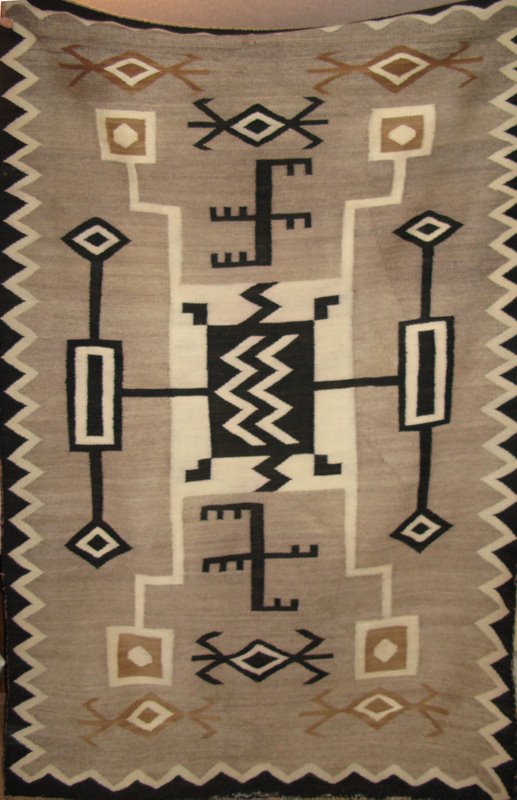Early Development of the Storm Pattern Rug
Building on yesterday’s post on the Storm Pattern variant, the earliest illustration that shows what today we would call a Storm Pattern rug comes from J.B. Moore’s 1911 catalog. The rug is plate XXIII and a reproduction of the color plate appears below.
The illustration shows a Storm Pattern that is little different in design from contemporary examples. Moore said “This pattern is one of the really legendary designs embodying a portion of the Navajo mythology. Not many weavers will do it for superstitious reasons and on that account its production is practically confined to one family or clan. ” Moore went on to state that the design was a variation on an earlier catalog design and to explain he was hoping that by documenting the design, he could influence other weavers to produce it because of heavy demand.
Whether Moore succeeded in getting increased production of the design isn’t known (although the Storm Pattern is one of the most commonly available designs today), but his catalog influenced other weavers and traders, who produced variations of the patterns, sometimes with their own regional adaptations. About 50 miles away in the Two Grey Hills area, for instance, Ed Daves at the Two Grey Hills Trading Post and George Bloomfield at Toadlena were having the Moore plates made up in the natural shades of wool that the area is famous for. If you look at the rug below you can see the similarity to the Moore catalog plate, even to the layout of the border.
The connection of the pattern to Navajo mythology probably has some validity, but it is difficult to establish because of variations in regional, familial and personal interpretation. There is one school of thought that attributes the development of the pattern entirely to clever marketing on J.B. Moore’s part. I believe, as Teresa Wilkins has also observed in her recent book, Patterns of Exchange, that this denies the ultimate ability of the weaver to determine the final design of the textile and introduce a personal component into the ultimate product. The Two Grey Hills Storm is a perfect example in that it differs in a few key areas from the Moore catalog plate.
When asked to talk about the Storm Pattern, weavers variously describe the central motif as the center of the universe, the hogan (the traditional Navajo dwelling) or a lake. The four corner motifs may be called the four sacred mountains, the four directions or the four winds. In rugs woven prior to 1930, motifs appear which may be referred to as swastikas, whirling logs or whirlwinds. These motifs have no relationship at all to the German Nazi party, and they were eliminated from Navajo rugs during the early 1930’s because of the Nazi appropriation of the symbol, a fact which helps to establish an upper bracket on the time when a rug was woven.
The broken line elements are often referred to as lightning and rain, and the six lined diamond elements within the rug are nearly always referred to as water bugs or piñon beetles.
You may see that these early rugs don’t have a spirit line, but the rug woven in natural colors contains an apparently intentional opening that is often referred to as a “Spiderwoman hole” (see picture below), a weaving practice that seems to have originated when the Navajos were incarcerated at Ft. Sumner, New Mexico during the period from 1864 to 1868. Reportedly, these small gaps were placed in wearing blankets to allow covert observation of the wearer’s surroundings. When these holes are present in early period rugs, they are thought to be an early form of spirit line, a means of releasing the weaver from the borders of the weaving, allowing her to move to her next rug. 


